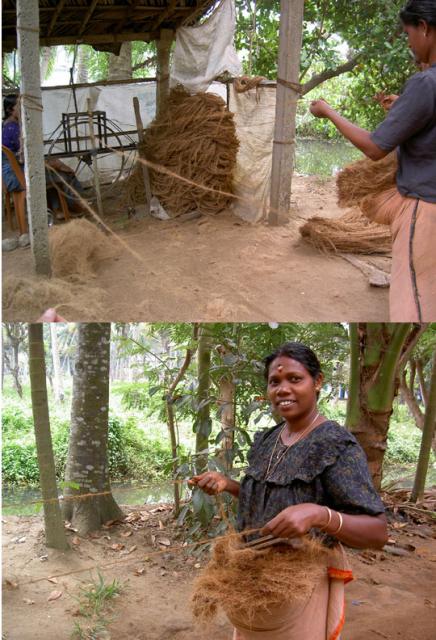
The coast of Kerala is punctuated with many, many rivers trying to drain the rainfall from the close-by Western Ghat mountains. The coastal plain is like the bayou country of Louisiana, low and flooded. These “Backwaters” are great to tour in a narrow boat. Kerala is the state name and its means land of the coconuts. The coconut palm trees grow fast and provide food and building materials. The canals that we floated along were once part of a rice paddy economy that proved to be unprofitable.
Once the coconut meat is eaten the shells are put under water for six months. The brown fiber becomes softened, and then removed. The dried fibers seem to tangle together so thoroughly, that you just grab a small bunch and twist the fibers together and if you keep twisting you can make a rope of coconut fiber called “coir.” The coir is sold to companies that make woven matting and rugs.
Each village is part of a cooperative, which is organized to create a systematic production of coir, which is wholesaled for profit. The villagers in the cooperative collect the coconuts and give them to a central group who does the soaking, drying and separation. Then huge bundles of fibers are distributed back to the cooperative members, who spin the fibers into long ropes. The images above show the apparatus and the people. The bicycle rim is spun by a handle; the moving rim spins four different rods with end hooks. A short strand of hand-twisted fiber is attached to each hook. Two workers each have a large bundle of fiber at waist height from which each spins two coir strands as the worker walks backwards away from the wheel. When the worker reaches a point about fifty feet away a standard length of coir is done. Pairs of standard length and thickness coir can be further twisted to create double thickness rope, etc.


